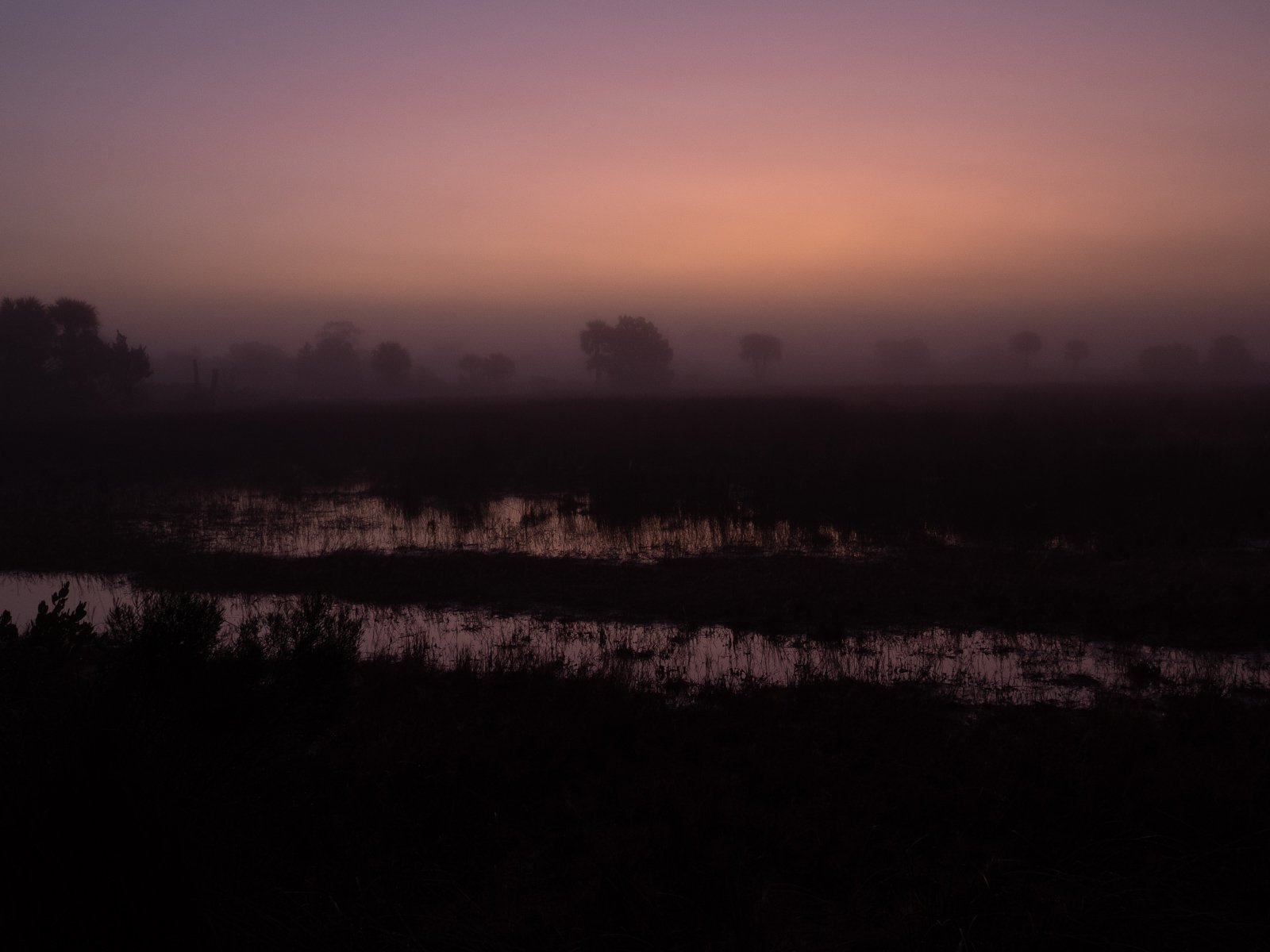A foggy morning at the Black Point Wildlife Drive at Merritt Island NWR
/The Black Point Wildlife Drive is a seven mile long, one-way dirt road through part of the Merritt Island NWR near Titusville, Florida. On January 2, 2023, following the schedule I had established on previous days, I arrived at one of the pools of water adjacent to a segment of the drive about 30 minutes before sunrise. The first three photos illustrate the conditions present at Merritt that morning. The first photo was taken about 30 minutes before sunrise. The second was taken five minutes later at a different location. The third photo is of the photographers I was following at the end of my two-hour-long first loop around the Black Point drive.
Photo illustrating the light conditions at one part of the Wildlife drive about 30 min before sunrise.
Photo illustrating the light conditions at a different part of the Wildlife drive about 5 minutes later.
The fog was still present when I finished my first loop around the trail two hours after beginning the drive.
As illustrated here, the initial photos I took of the birds feeding at the pool of water where I had stopped were nondescript. Taken in the fog when the light levels were low, they were lacking in detail and color. Nonetheless, I found it interesting that, because of the stillness of the water and the distribution of the available light in the fog, the reflection of the bird in the water had almost as much detail as that seen in the bird itself.
Sometimes the photos from that morning contained the images of two or more birds and their reflections. I liked the effect of some of these shots enough that, subsequently, I have spent some of my time experimenting with ways to photographically exploit the detail that is present in the reflections when light levels are greater. I will post results of this experimentation later.
The fog conditions varied as time and location changed. Some images generated (for me) a mystical feeling. This photo and the next one are examples of those that did so.
Reddish Egret and Roseate Spoonbills feeding on a foggy morning at the Merritt Island NWR.
The last five images are of a Great Egret. The bird appeared to emerge from the screen when I first saw them. The white feathers of the bird seemed to collect almost all of the available light and the relative absence of light in the surrounding water creates an illusory vignette.
I am intrigued by the photographic effects of fog. I was inspired to read more about it on the web and found an informative article on The Canadian Nature Photographer web page. Take a look.
